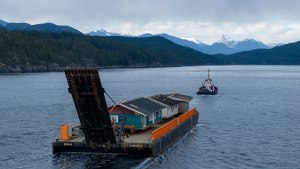Ongoing challenges and advances in repointing mortar and masonry are front and centre at the National Research Council Canada’s Institute for Research Construction (IRC).
Research
Ongoing challenges and advances in repointing mortar and masonry are front and centre at the National Research Council Canada’s Institute for Research Construction (IRC).
An IRC working group was established in 1997 to discuss concerns, research priorities, advances and challenges about mortar for masonry buildings. Membership is open to all involved in the use of repointing mortar for masonry in a relatively new field of trades, engineering and architecture expertise.
“For the longest time, there were not many standards. You could get any kind of mortar going in on a project,” explained Ken Trischuk, working group co-chair and NRC technical officer.
Research and development through case study work and shared best practices have resulted in new options for those using repointing mortar.
Advances and new information on items such as cold weather curing, use of hydraulic lime, freeze-thaw cycles and pre-mix mortar quality have come from and through the working group. Under cold weather curing, modern mortars usually need three days of warming because they gain strength very quickly, explained Trischuk.
“Repointing mortar originally would have 28 days of heated protection, because it is of lower strength, but we have found it only needs seven days,” he said. “This helps the contractor and reduces some hassles.”
The group has also published Key Considerations for Repointing Mortars for the Conservation of Older Masonry, which outlined some general guiding principles for using mortar in conservation projects.
Among the outlined principles was that only masons, contractors and professionals experienced in conservation work should undertake conservation projects. Site conditions such as work schedule, worker qualification, joint preparation and mixing, and curing of mortar are all important.
“The use of hydraulic lime (for instance) is something new we have worked on. It is having a revival,” noted Trischuk. “It has beneficial qualities. It breathes easy and is flexible. How to mix it? How to use it? It is sensitive to construction practices since it is low strength. When it has not been treated well we have seen how bad it can go.”
Repointing mortar should also be designed to be “sacrificial to the masonry” on a structure. Strong cement mortars tend to damage brick and stone as they deteriorate, since they are less flexible and become brittle over time.
“We know masonry flexes and moves with temperature and we want mortar to work with that,” said Trischuk. “We want mortar to deteriorate first over time and not the stones it is holding.”










Recent Comments
comments for this post are closed